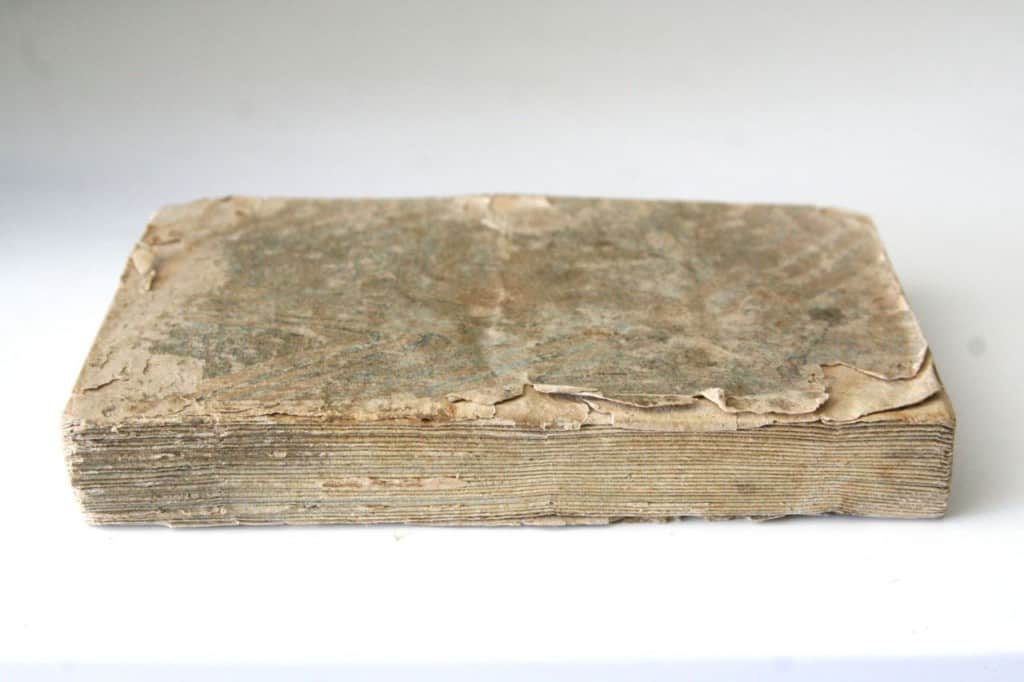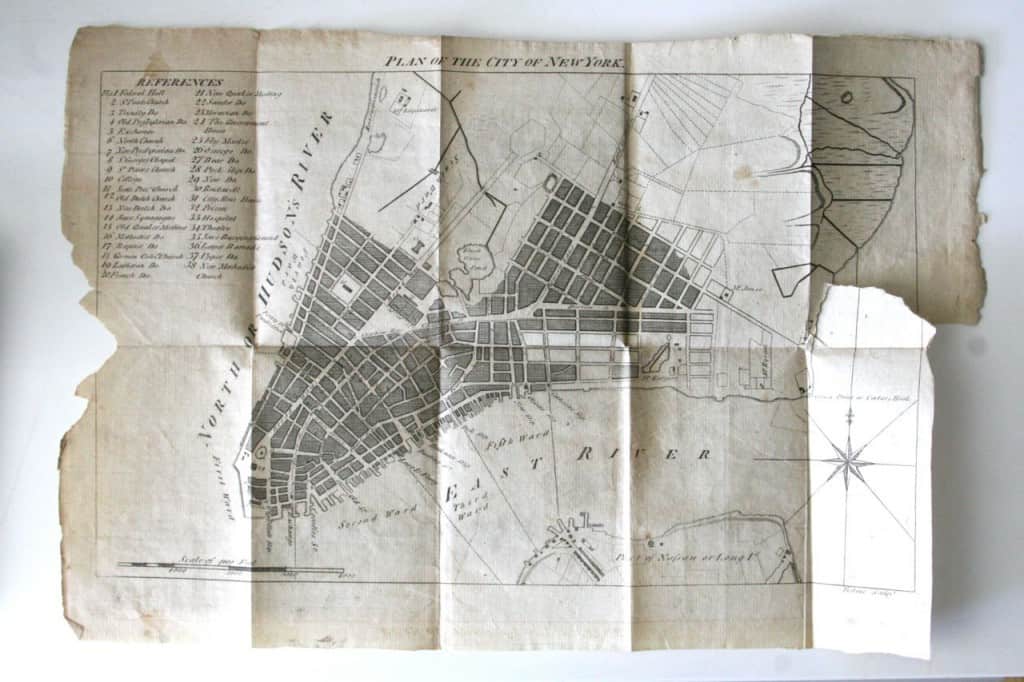March 16, 2015
Selling Rare Books in Poor Condition – Worms, Rats, Floods & Fire
“Condition, condition, condition!” That is often the phrase I hear antiquarian booksellers use as a warning to collectors- an echo of the most important thing to remember in real estate: “location, location, location!”
This, it must be said, is generally true. Condition does have an important effect on the value of rare books- and often to degree that makes little sense to anyone with a rational understanding of the ravages of time or an appreciation of history. Yes, if a copy of a modern first edition lacks its dust jacket, and there are an abundance of other freshly printed copies, there is little excuse not to buy a fine copy and consequently, any that do not measure up can be expected to be worth a mere fraction.
Should this be true, however, for antiquarian books that have travelled continents, passed through endless hands, been poured over in dim evening light next to irregularly melting candles, hid themselves in corners and basements from the horrors of war, and have borne witness to revolutions and peace? (remember what adaptable survivors books are the next time someone asks if books can survive the Kindle).
First, condition should be evaluated by a professional bookseller. Do not assume just because your book looks in poor condition that it is in poor condition. There have been many instances when someone has sent me a book described as “worn and shoddy, or in poor condition” only to see that they are describing a book in the rare publisher’s cloth boards or a modest early 18th century American tree bark binding of great collectible value. Additionally, certain titles and books – if they are rare enough- have to be compared with the number of surviving copies and the state and condition of those copies. I have had books that are “incomplete”- perhaps the most damaging adjective to a book’s monetary value- only to have discovered that it is the most complete and best surviving copy (and have then priced it accordingly!)
I am one of those dealers that does NOT obsess over condition and appreciate (an even imagine) the stories that led a book to its present state. As such, I am also against unnecessary restoration of books, to transform them into something they are not (handsome salable copies) and in essence to destroy (or at least detract from) part of their story.
Here are a few examples of the common condition problems that can befall books:
RATS:
Below is a legal manuscript from the first quarter of the 16th century: Manuscript, Statutes and Ordinances of the Diocese of Nantes [France, c.1515]. It was written shortly after the death of Anne of Brittany. In the corner, some rodent had a field day munching on the fine vellum, but thankfully due to generous margins, missed the text itself or just at least preferred the “white” rather than the “dark” meat. I imagine that as soon as the French Wars of Religion got into full swing that this Catholic statute book was abandoned in the basement of a church with the rats running loose until at least the 19th century when it was rediscovered (as it contains some notes on the flyleaf.)
WORMS:
Here is a humble little volume – and a rare one- of the Italian Renaissance poet Ascanio Grandi, printed in 1636, where worms have left their mark. Worms approach books with a callous indifference to subject matter- whether mundane or erudite- but at least they love books. The turns and twists they make through the pages, if not hinting at 16th century fractal patterns, can be be appreciated for their natural beauty and modern artistic sensibilities.

FLOODS:
Below is a 1616 folio of the collected works of of Ben Jonson. This folio was crucial to developments in the publication of English literature and English Renaissance drama- and in no small measure inspired the publication in 1623 of Shakespeare’s First Folio (which helped preserve his works for us). One can see that the work was severely damaged by the now brittle damp-stains of a flood. What student in Oxford in the 17th century was sitting reading with few cares by the Thames and dropped in momentarily into the water when a pretty maiden caught his eye? As Shakespeare said, “there is a tide in the affairs of men, Which taken at the flood, leads on to fortune.” If only this were true of books.

FIRE:
Here is a book whose damage really tells a story. It is another work of Renaissance poetry, but this one came from and has the stamps of the Vatican Library! Inside a c. 1920s bookseller’s catalog clipping is tipped-in stating :”A curious collectors relic: a scorched book from the only fire in Vatican Library history. Contents sound, but singes covers preserved as grim momentos…” The fire which broke out in the Vatican on November 1,1903, seriously endangered the library and art collection, and had it not been contained, would have taken its place in history next to the burning of the Alexandrian library.

FINALLY:
I must conclude with an image where an unusual condition flaw (a splotch of ink) perhaps raises the value of the sullied manuscript to an inestimable degree (or at least made it a wonderful curiosity! Here a cat, always indifferent to anything of potential value more than itself, walked across this manuscript in the 15th century and left his prints.

[Ref: Cat paws in a fifteenth-century manuscript (photo taken at the Dubrovnik archives by @EmirOFilipovic)]
If you are curious about the value of your antiquarian, antique, or rare book, and want a free evaluation and for me to assess its condition- don’t hesitate to send photos to webuyrarebooks@gmail.com








